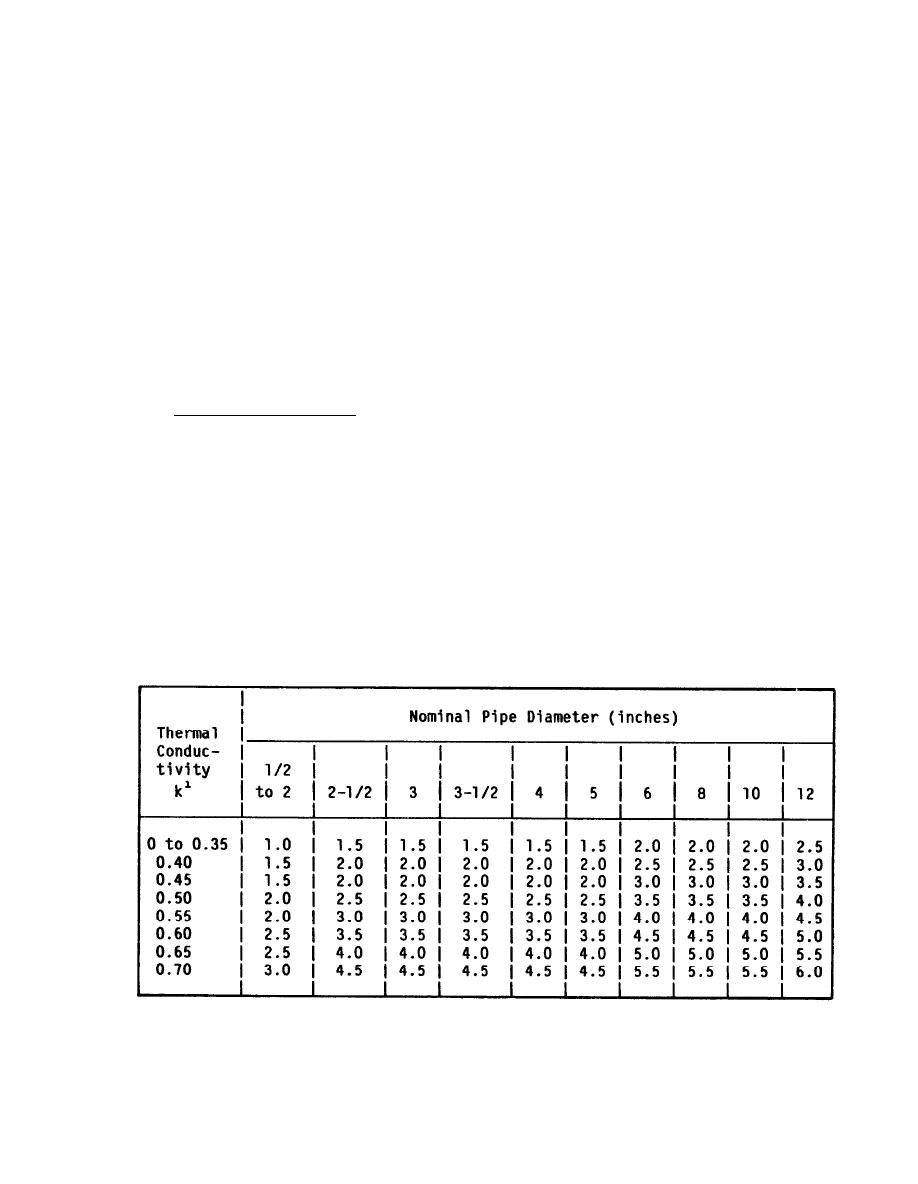

Custom Search
|
|

|
||
 (e) Processed Gilsonite. T h i s is a loose, bulk Insulation consisting of
h y d r o c a r b o n with a high resin content. W h e n used to insulate hot pipe, it
forms three zones around the pipe: f u s e d , sintered, and unconsolidated. The
m a t e r i a l in direct contact with the pipe melts and fuses to the wall providing
a dense waterproof coating. I t remains plastic enough, however, to allow for
n o r m a l expansion and contraction of the pipe. The sintered zone provides a
w a t e r r e s i s t a n t b a r r i e r w i t h i n s u l a t i n g q u a l i t i e s . T h e outer zone retains its
p r o c e s s e d form which provides the pipe with additional insulation and its
l o a d - b e a r i n g characteristics.
( f ) 85 Percent Magnesia. This is no longer made due to the asbestos
c o n t e n t , but is still found in some plants on older lines.
( 9 ) Alumina-Silica Ceramic Fiber. T h i s is a material with multiple
a p p l i c a t i o n s that can be processed into blankets, strips, cloth, paper, and
s o l i d shapes. S o m e varieties withstand temperatures in the 2,300F to 2,600F
range.
1 . 4 I n s u l a t i o n T h i c k n e s s . L a c k i n g an economic analysis of the specific
p l a n t , table 7-2 contains suggested minimum thickness of insulation in
r e l a t i o n to nominal pipe diameter and dry thermal conductivity. The k factor
l i s t e d in the table is for a mean temperature of 200F. The k factor for
c a l c i u m silicate should be assumed as 0.40 for use with this table. In
underground systems, t h e k factor for the insulation is often assumed to be
0 . 4 0 regardless of its actual value.
I n s u l a t i o n thickness for condensate
r e t u r n piping installed in separate conduits should not be less than 1 inch.
C o n d e n s a t e return piping installed in the same conduit with the steam piping
need not be insulated. Condensate return piping in manholes, however, should
b e insulated with insulation of the same material and thickness required for
steam piping of the same size.
TABLE 7-2.
Minimum Pipe Insulation Thickness
1
For Intermediate k factor, use the k factor nearest. For example:
for k=0.385 use 0.40.
7-3
|
 |
|
 |
||